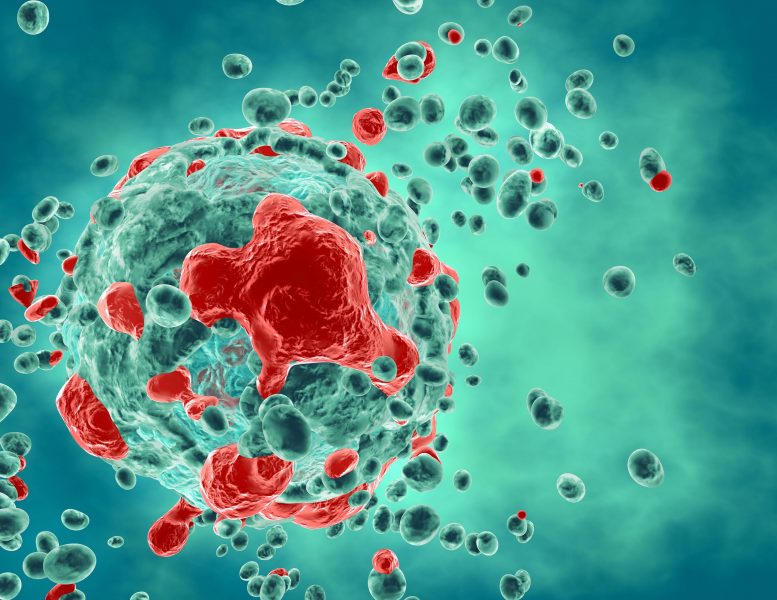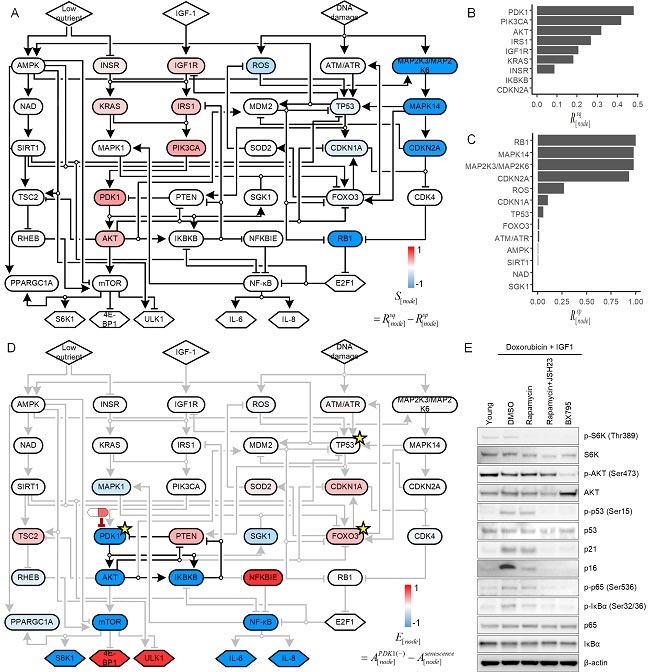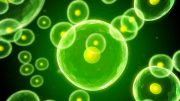
Research from a KAIST team sheds light on cellular senescence and offers a potential therapeutic approach for age-related diseases linked to senescent cell buildup.
Turning off a newly identified enzyme could reverse a natural aging process in cells.
Research findings by a KAIST team provide insight into the complex mechanism of cellular senescence and present a potential therapeutic strategy for reducing age-related diseases associated with the accumulation of senescent cells.
Simulations that model molecular interactions have identified an enzyme that could be targeted to reverse a natural aging process called cellular senescence. The findings were validated with laboratory experiments on skin cells and skin equivalent tissues, and published in the Proceedings of the National Academy of Sciences (PNAS).
“Our research opens the door for a new generation that perceives aging as a reversible biological phenomenon,” says Professor Kwang-Hyun Cho of the Department of Bio and Brain Engineering at the Korea Advanced Institute of Science and Technology (KAIST), who led the research with colleagues from KAIST and Amorepacific Corporation in Korea.
Cells respond to a variety of factors, such as oxidative stress, DNA damage, and shortening of the telomeres capping the ends of chromosomes, by entering a stable and persistent exit from the cell cycle. This process, called cellular senescence, is important, as it prevents damaged cells from proliferating and turning into cancer cells. But it is also a natural process that contributes to aging and age-related diseases. Recent research has shown that cellular senescence can be reversed. But the laboratory approaches used thus far also impair tissue regeneration or have the potential to trigger malignant transformations.

The scientists conducted what is known as an ensemble model simulation to identify molecules that could be targeted to reverse cell senescence. They then used the model to predict the effects of inhibiting PDK1 in senescent cells, and confirmed the results in lab-cultured cells and skin equivalent tissue models.
Professor Cho and his colleagues used an innovative strategy to identify molecules that could be targeted for reversing cellular senescence. The team pooled together information from the literature and databases about the molecular processes involved in cellular senescence. To this, they added results from their own research on the molecular processes involved in the proliferation, quiescence (a non-dividing cell that can re-enter the cell cycle), and senescence of skin fibroblasts, a cell type well known for repairing wounds. Using algorithms, they developed a model that simulates the interactions between these molecules. Their analyses allowed them to predict which molecules could be targeted to reverse cell senescence.
They then investigated one of the molecules, an enzyme called PDK1, in incubated senescent skin fibroblasts and three-dimensional skin equivalent tissue models. They found that blocking PDK1 led to the inhibition of two downstream signaling molecules, which in turn restored the cells’ ability to enter back into the cell cycle. Notably, the cells retained their capacity to regenerate wounded skin without proliferating in a way that could lead to malignant transformation.
The scientists recommend investigations are next done in organs and organisms to determine the full effect of PDK1 inhibition. Since the gene that codes for PDK1 is overexpressed in some cancers, the scientists expect that inhibiting it will have both anti-aging and anti-cancer effects.









Very interesting, would like more information please
As a guy from the streets of evolution I have to say for thirty years, I keep hearing the same old stuff… we found this, we got that, we discovered why you’re melting, the telomeres are leaving, the molecules are angry… come-on put something on the market and then tell us you’re a smart hero…
Rick! You’re right. I don’t get excited now when I read this sort of article. Reclaimed youth is an old story. Time to deliver or work quietly.
Your critique is humorously worded too.
Jack and rick, I totally agree. I have seen this sort of story over the last 15 years yet no product has been made available or even been tested on an animal. It’s time to see some actual proof.
There is a safe well tested and proven procedure done by top doctors in their field that is available to anyone with $50K.
Its painless. It fixes failing organs. All of them. Majors like heart, minors like erections, eyes.
Not available in the US.
Big pharma controlled FDA made it illegal.
Can’t have healthy people running around not needing their monthly scripts.
Available at state of the art facility.
I will divulge the procedure and where exactly its done, but I’m old and broke. And broken.
I’m gonna bet there might be enough wealthy people out there that would pay for that info.
So the deal is this… You agree to pay for my treatment plus a round trip ticket from my doorstep there and back again, plus accommodations while there.
I will film it as I go, and once I’m there, you either wire the funds directly to the facility, as opposed to me, (proof not a scam) for the procedure or you fly in and have it done alongside of me
You provide me with decent camera and other tech equipment to document the whole thing so you know its legit.
This will even beat the covid.
Idk if the restrictions of covid lockdown affect leaving the country… AND returning.
So… You who are wealthy enough to comfortably gamble $50k+ on a strangér.
Hilarious!